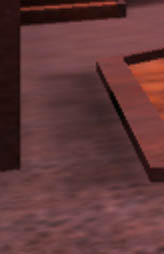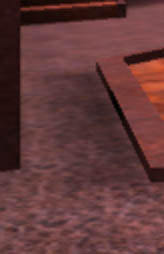ATI's SMOOTHVISION - The key to its "success"
by Anand Lal Shimpi on November 26, 2001 5:29 AM EST- Posted in
- GPUs
Answer 1: SMOOTHVISION uses Supersampling
If SMOOTHVISION were a multisampling AA algorithm then its sampling pattern could in no way result in the extremely sharper textures we saw in our previous review. The key word in that sentence is if; as we found out in our meeting with ATI, SMOOTHVISION is in fact a supersampling AA algorithm and does not use multisampling as we had originally assumed. While we could swear it was originally presented to us as a multisampling solution (that would explain how every other website out there has it listed as a multisampling AA algorithm), ATI insisted that they never mentioned it as either a super or multisampled solution - just a pseudo random-sampling AA algorithm.
Supersampling explains quite a bit about SMOOTHVISION; it explains why we were able to attain similar image quality from a GeForce2 GTS (and a Radeon DDR for that matter) and it explains why the Radeon 8500 takes such a large hit with 4X AA enabled (supersampling requires much more bandwidth than multisampling, the more samples you must take the more the bandwidth gap increases).
But what about GeForce3 users that are willing to take the performance hit to get the same crisp textures that GeForce2 and Radeon 8500 owners are granted? The answer to this is simple; we mentioned earlier that additional filtering could be used to reduce the blurring impact of multisampling - anisotropic filtering does just that.
When enabled on the lowest level supported by the GeForce3 (enabled through NVMax, a great utility for NVIDIA card owners), the resulting image with Quincunx AA can be found below (Note: since these screenshots are so small we'd suggest setting your screen resolution to no greater than 1024 x 768):
|
ATI
Radeon 8500
2X Performance AA  |
NVIDIA
GeForce3 Ti 500
Quincunx AA  |
NVIDIA
GeForce3 Ti 500
Quincunx AA + Level 2 Aniso  |
It seems as if the pseudo random sampling nature of SMOOTHVISION does not yield any visual benefits as the vast majority of the quality produced by the algorithm is due to its supersampling nature. The real question here is which performs better: Radeon 8500 with SMOOTHVISION or the GeForce3 Ti 500 with AA and anisotropic filtering?
Let's put that question on hold as we look at another issue that turned up while examining the quality of SMOOTHVISION.










0 Comments
View All Comments